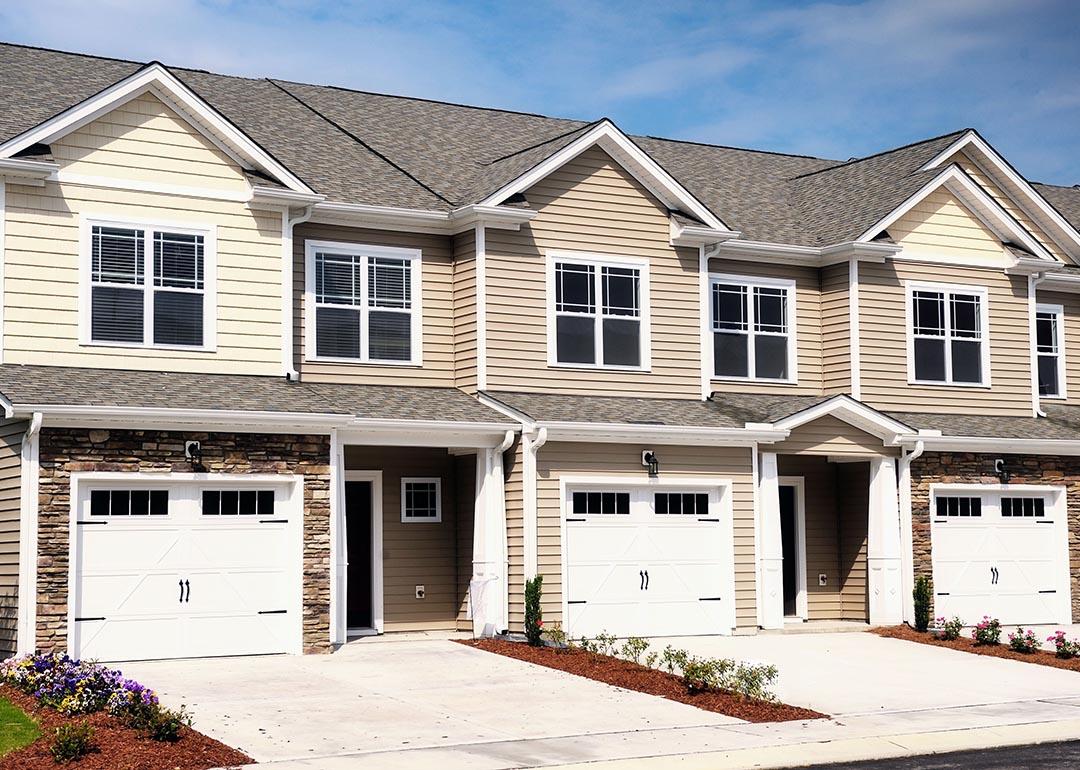
The new American dream home? Why more buyers are choosing townhomes in 2025
The new American dream home? Why more buyers are choosing townhomes in 2025
For generations, the American dream home was about size, space, and privacy. But that vision is changing as affordability pressures rise and smaller, smarter designs better reflect how homeowners want to live today.
The ideal has evolved with each era, revealing what buyers value most: From single-family living when rising automobile use made commuting easier in the 1950s and ’60s and, later, sprawling McMansions when size was status in the 1980s and ‘90s.
Now, the growing popularity of townhomes suggests that today’s dream is defined less by size and suburban sprawl, and more by attainability and lifestyle fit.
Traditionally seen as a starter home, the townhome is gaining traction across multiple buyer segments, including first-time homebuyers, 55+, single women, and single-parent families.
“In today's challenging housing market, consumers‘ growing interest in townhomes is a direct response to two primary pressures: affordability and lifestyle preference,” says Ali Wolf, NewHomeSource’s chief economist.
It’s a measurable trend that has been taking shape for some time.
NewHomeSource’s parent company, Zonda, found in its National Outlook Report in August 2024 that townhome starts were up 25% year-over-year and were 37% higher, compared to the second quarter of 2019, pre-pandemic.
In the summer of 2025, Zonda's National Outlook Report revealed that townhome sales edged past detached homes. The trend was modest on a national level but showed regional strength. This is a continuation of a larger trend, where attached sales led detached sales in six separate months since June 2024.
Meanwhile, “about 18% of all single-family starts were townhomes,” in the second quarter of 2025, says Rose Quint, assistant vice president of survey research with the National Association of Home Builders (NAHB). “That’s the largest share on record.”
Here are some of the factors driving townhome demand and design in 2025.
Affordability Remains a Key Factor
After years of high prices and borrowing costs, buyers are pragmatic, willing to share walls for a foothold on the property ladder.
“With the high cost of housing across the country, townhomes have emerged as a vital, more accessible entry point into homeownership,” says Wolf. “They are often priced lower than detached houses, offering buyers — especially first-timers, young professionals, and those downsizing — the chance to build equity without breaking the bank. This cost-effectiveness is combined with a crucial lifestyle benefit: minimal maintenance.”
Low maintenance comes with trade-offs, however, and house hunters should consider whether those align with their priorities and budget.
“Oftentimes people search for a townhome but don’t always end up buying one, opting for a detached home instead. This is because townhomes can come with higher monthly costs associated with homeowner association fees and/or higher insurance costs that are a key consideration for prospective homebuyers,” says Wolf.
For budget-conscious buyers, new-build townhomes may offer additional value. Brand new materials require fewer repairs, and energy-efficient design lowers energy bills, while builder incentives make the purchase more affordable.
Price doesn’t affect just buyers — builders are drawn to development efficiencies of townhomes, too.
“Townhomes use less land, lumber, and building materials, and so it's easier for builders to build at more affordable price points. Builders are building smaller homes, streamlining options and features, in order to bring down the overall price points so they can help their buyers save at the moment,” says Quint.
A Broader Buyer Pool
Once considered a modest starter home, the townhome now appeals to a wide spectrum of buyers.
Single women buyers appreciate the community and safety that shared walls offer, and this demographic is growing. According to a recent survey from the National Association of Realtors, nearly a quarter of first-time homebuyers are women. Among all home purchasers, 20% are single women, far outpacing single men buyers, and the number of women buying homes has doubled in the last 40 years.
Buyers, especially millennials, are more focused on home features and amenities than home size, and are looking for medium density, walkable locations with access to amenities and public transportation, all of which make the townhome an attractive option.
This is significant because millennials are the largest cohort of homebuyers in the U.S. “At the moment, they represent 38% of home buyers. And they have reached peak buying years, so there's a lot of potential demand there for townhomes,” Quint says.
Meanwhile, 55+ buyers like the low-maintenance lifestyle that comes with townhome living. Higher-end, trending designs also let these buyers downsize without feeling like they are compromising.
Single-parent families are also buying more townhomes, drawn by locations with good schools, and other family-friendly, in-community amenities, like pools and playscapes.

How Townhome Design is Adapting to Suit Today’s Homeowners
Old-school townhomes were narrow, dark, and boxy. Today, townhomes are light-filled, versatile, and highly functional, with more designs to choose from.
“We currently offer townhomes in all three price points: entry level, move-up/down, and luxury,” says Brian Juedes, vice president of product design for Taylor Morrison, noting options for two and three stories and multiple garage configurations, a far cry from how townhome floorplans used to be.
As floor plans compress, builders are re-thinking layouts. “In an effort to maximize space, many builders have shrunk floor plans by eliminating excess square footage without changing the function or livability of homes. We like to think of this concept as more function per foot,” says Juedes.
Typically, this means an open concept living/dining/kitchen on the main floor, maximizing natural light, and amplifying the sense of space while supporting good traffic flow.
Current townhomes make good use of vertical space. Built-in storage on walls hides clutter and creates more usable space. Higher ceilings draw the eye up and out. Multiple floors mean that beds, baths, and living spaces can be stacked efficiently.
A must in the modern townhome is flex space, which can accommodate home offices, additional bedrooms, hobby rooms, or income generation.
With smaller interiors in townhomes, new designs compensate with a focus on outdoor spaces. “Outdoor living is becoming more important. As the house size has shrunk, buyers are looking to extend their living space to the outside,” says Quint, noting the increase in covered porches and patios. There is also greater interest in shared community amenities, such as neighborhood pools and parks, that offer outdoor recreation without backyard upkeep.
While townhomes have lots of appealing features, some buyers hesitate over shared walls. In these cases, Juedes recommends end units, which share a wall on only one side, providing more privacy and letting in natural light from three sides.
For homeowners leery that a townhome might feel small, intentional design choices can boost the perception of space.
- Use similar color palettes throughout, so the space seems continuous.
- Choose a single flooring type and run it through the main floor. Transitions between flooring types interrupt the flow.
- Opt for open-riser staircases or glass railings to extend sightlines.
- Maximize concealed storage to cut clutter
This story was produced by NewHomeSource and reviewed and distributed by Stacker.



